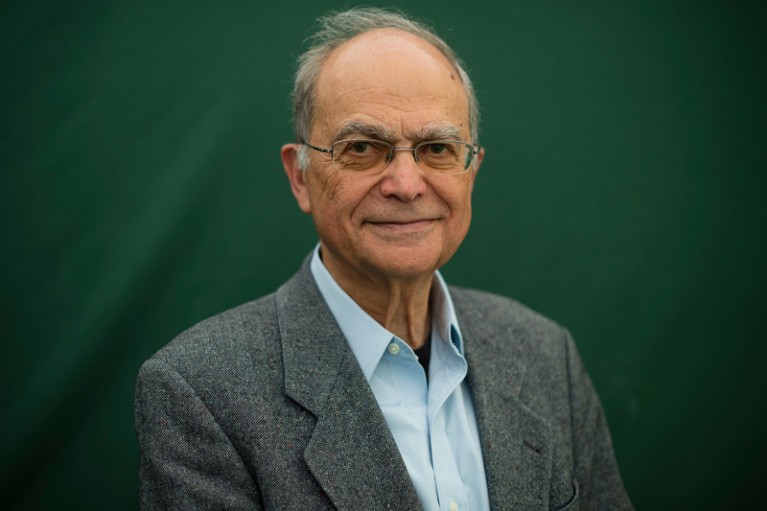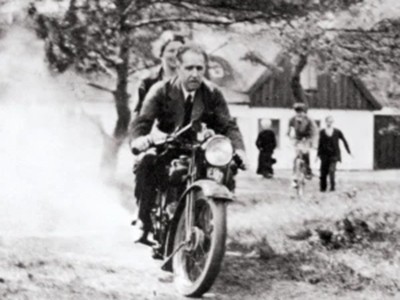
Credit: Keith Morris/Hay Ffotos/Alamy
John Heilbron’s intellectual rigour transformed how scholars approach the history of science. The intersection of people, scientific ideas and institutions was his domain, ranging from early modern European astronomy to the revolution of twentieth-century physics. The author of more than 20 books, Heilbron was known for his razor-sharp analysis and perceptive discernment of human frailties and strengths. He has died aged 89.
Heilbron understood institutions and how they channelled and sustained a scientist’s work. In Lawrence and his Laboratory, for instance, a 1990 book he wrote with fellow science historian Robert W. Seidel, he laid bare the world of physicist Ernest Lawrence, the inventor of the ‘cyclotron’ particle accelerator whose work led to the setting up of National Laboratories in Berkeley and Livermore, California. By putting discussions of nuclear science and radioisotopes cheek by jowl with descriptions of the building and financing of institutions, the book set the stage for similar histories in other areas of ‘big science’.
And Heilbron’s 1999 study The Sun in the Church discussed how, from the sixteenth to the eighteenth century, the Catholic church sought to resolve astronomical questions regarding solar motion using meridian lines laid into cathedral floors. Turning the narrative of hostility between religion and science on its head, Heilbron built an empirical case for how church clerics had contributed to the triumph of heliocentric theory. And he did it with precision and verve.
John Heilbron was born in San Francisco, California, in 1934 and he studied at the University of California, Berkeley. He did undergraduate and master’s degrees in physics in the heady time after the Second World War, before switching to the history of physics for his PhD, which he earned in 1964. Heilbron studied at Berkeley with Thomas S. Kuhn, whose work at the intersection of history and the philosophy of science introduced the world to the concepts of ‘scientific revolutions’ and ‘paradigm shifts’. Kuhn also underscored the crucial role of the scientific community as the arbiter of how well a theory fits the real world. The student took seriously the teacher’s demand that scholars consider the history of science as it really happened, rather than favouring the smoothed-out narratives that retrospection might bring. But Heilbron didn’t follow Kuhn’s philosophical tack, because he considered history to be hard enough without engaging in abstract arguments about how science works.
Heilbron’s early work examined the theory of atomic structure in the decades around 1900. For his PhD, he trawled through published papers that led to the model of the atom proposed by Danish physicist Niels Bohr and gathered archives and testimonies from the founding generation of quantum physicists. The field of quantum physics and the transformation of scientific institutions that occurred on the cusp of the twentieth century were ripe for study. But he did not stop at that era. He also studied Europe’s early modern period (1450–1789), focusing on theories of electricity and natural philosophy. And he pursued broad questions in the physical sciences, including ideas and societal impacts that emerged from the field across centuries.
Evelyn Fox Keller (1936–2023), philosopher who questioned gender roles in science
Appointed Kuhn’s successor at the faculty in Berkeley in 1967, Heilbron remained there until his retirement in 1994. He was prodigiously productive in many arenas: as a historical scholar, research collaborator and trainer of young historians. Alongside his detailed studies of electricity, quantum physics and Euclidean geometry, he wrote astute biographies. He produced portraits of German physicist Max Planck, Italian astronomer Galileo Galilei and others, homing in on how their science interacted with their human character. Noting Planck’s longing for abstracted harmony and Galileo’s literary finesse, he always found something new to say.
Heilbron was a driving force in making the history of science a discipline of its own. For 27 years, he shaped the field as editor-in-chief of the journal then called Historical Studies in the Physical Sciences. He saw his editorial work as a commitment to teaching others how to rise to his high standards of rigorous argument, by removing what he saw as intellectual fluff and superfluous words. Scholars whose work he edited remember gasping at how vigorously he would cut into, rearrange and rewrite their prose. His own writing was entertaining and literate, witty and acerbic. When he spoke on public occasions, he did not shy away from expressing sharp views. However, both colleagues and students remember the affection and care he showed them.
John was a man of institutions, even though he preferred to work on his own terms. He wove together international networks of historians of science, and, at Berkeley, rose to become the university’s vice-chancellor. His broad scientific knowledge and sharp insights into human behaviour helped him to work with the university’s competing power centres and to make deals that stuck. He received his profession’s highest awards, including the Sarton Medal in 1993, the 2001 Pfizer Award and the Wilkins Prize Lecture of the Royal Society of London in 2006.
When John retired from his administrative post, he was free to pursue history again. He moved to live near Oxford, UK, and continued his editorial work, travels and research, accompanied by his wife Alison. A scholar’s scholar, John knew that people — individuals and their relationships — are at the heart of all intellectual ventures. Making a life in the history of science as the field emerged, he contributed profoundly to shaping it.


 The path to the quantum atom
The path to the quantum atom
 Evelyn Fox Keller (1936–2023), philosopher who questioned gender roles in science
Evelyn Fox Keller (1936–2023), philosopher who questioned gender roles in science
 The ‘brazen’ science that paved the way for the Higgs boson (and a lot more)
The ‘brazen’ science that paved the way for the Higgs boson (and a lot more)
 How a forgotten physicist’s discovery broke the symmetry of the Universe
How a forgotten physicist’s discovery broke the symmetry of the Universe
 Engaged in collaborative research? Try a touch of intellectual humility
Engaged in collaborative research? Try a touch of intellectual humility
 What the Ottomans did for science — and science did for the Ottomans
What the Ottomans did for science — and science did for the Ottomans







